Professor Terrence Curry from the SIGS Institute of Future Human Habitats is an award-winning architect and a passionate teacher. Originally from the United States, he has previously lived and worked in Hungary, the Netherlands, and China. Before coming to SIGS, he taught architecture for seven years in Beijing at Tsinghua. His areas of research are design methodology, tectonics, prefabrication, and assembly systems.
Professor Curry recently sat down with us for an interview about his path to becoming an architect, his teaching philosophy, and his journey to SIGS.
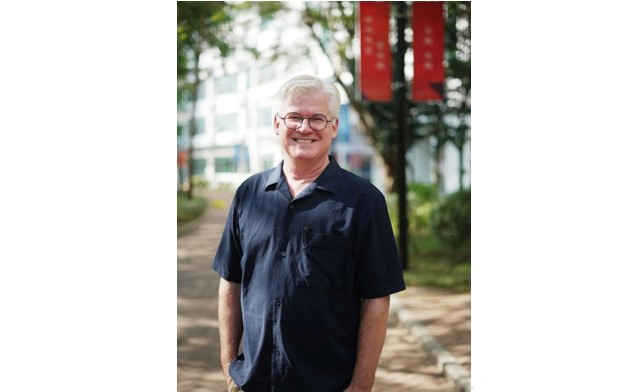
Professor Terrence Curry on the SIGS campus
“Learning-by-making”
“When I was around eight years old, my mother bought me my first power saw,” remembered Terrence Curry. His mother had observed the amazement her son felt watching his grandfather, a craftsman, at work. “I was very much fascinated by him, his tools, and this whole world of mechanical things.” This was the beginning of Curry’s passion for “learning-by-making.”
In 1980, Curry took this excitement to Pratt Institute in Brooklyn, where he integrated a penchant for drawing and “making” into studying architecture. At Pratt, he entered a world of creativity and experimentation.
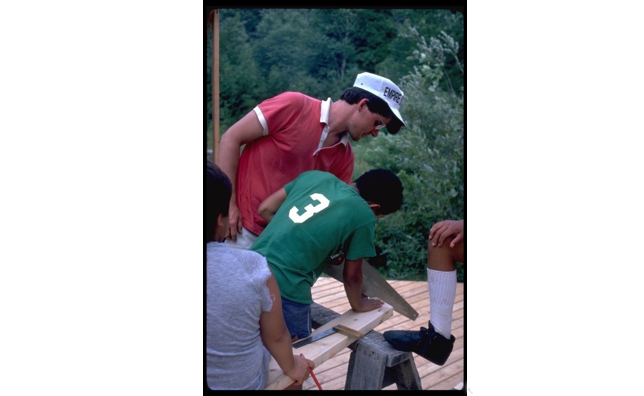
Curry at his first-design build project at 23 years old in Lake Placid, NY, USA
In 1984, Curry received a Bachelor of Architecture from Pratt. In contemplating his next steps, he looked back to the sense of community service that his mother instilled in him.
Curry was raised in an environment where helping others was paramount.
Harboring this sense of social responsibility, he began teaching at the University of Detroit in the School of Architecture. In addition to his teaching responsibilities, he also worked with the underprivileged in urban cities around the US. Curry explained, “In cities like Chicago, Detroit, and Oakland, residents could participate in analyzing their neighborhood and identifying potential projects. Then my students and I would help them to develop concepts and create development strategies for these projects.”
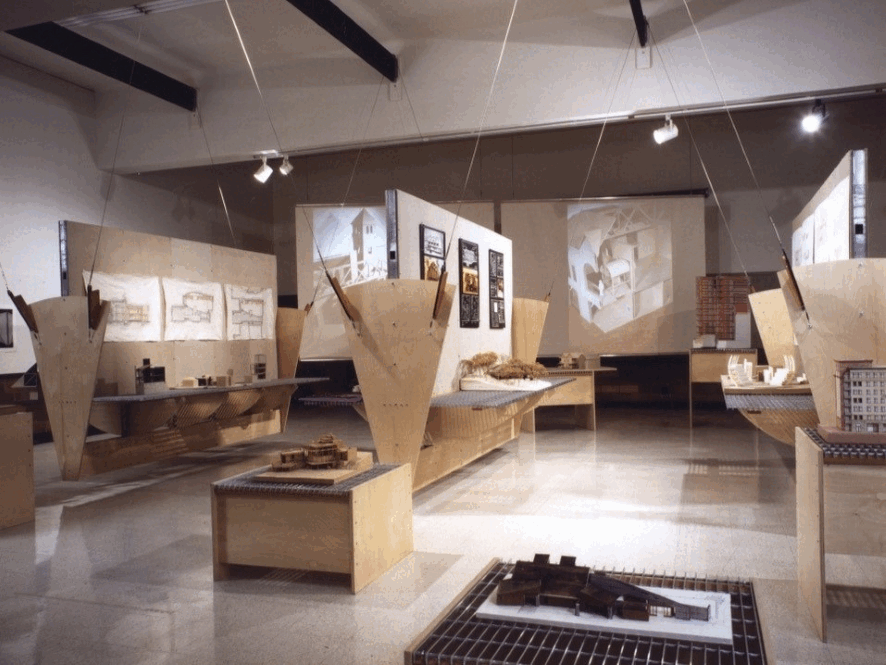 Several of Curry’s built projects during his career
Several of Curry’s built projects during his career
This work led to the creation of the Detroit Collaborative Design Center, an institute for applied research studying how to assist the poor in developing an image for their communities and supporting residents in undertaking complex building projects. Not only did the center go on to manage over ten million dollars in construction and receive eight awards from the American Institute of Architects, but it also became a model for university-sponsored community service.
Curry deepened his knowledge in community work as a Loeb Fellow at Harvard University from 2000 to 2001, where he got to dig deeper into community design development, especially finance.
Later, Curry took this participatory process to students at the Budapest Institute of Technology (Budapest). At the time, his students were largely familiar with design theory but had little opportunity to engage in practical hands-on work. Curry connected his students with social organizations, including the Hungarian Red Cross, hospices, orphanages, etc., helping his students prepare for their professional careers as architects and instilling in them the social responsibility and “participatory process” that he holds dear. This led to the creation of a studio in Budapest called Szent Jozsef Studio Kollegium which he directed until 2008.
Teaching at Tsinghua
Curry arrived in China in 2009, ready to continue his career as an instructor. Intrigued by Curry’s “learning-by-making” teaching philosophy, Zhu Wenyi, who was dean of the School of Architecture at Tsinghua at the time, invited him on as an instructor for a construction-related course called Tectonics Studio that faced low enrollment.
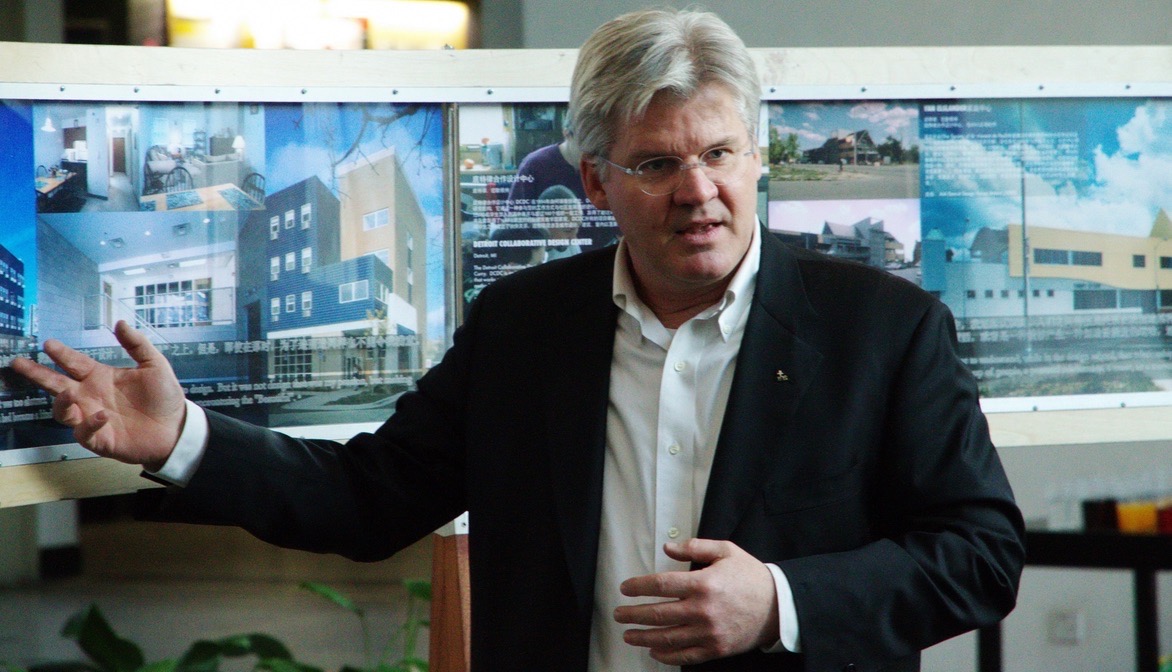
Curry lecturing at Tsinghua in Beijing in 2010
Not only did Curry help to make the course one of the most popular in the school, but he went on to instruct students at Tsinghua for seven years as a Professor of Practice and the deputy director of the English Program Master of Architecture from 2014 to 2018. “Teaching at Tsinghua [in Beijing] was the best. The students were open-minded, kind-hearted, and highly motivated. They were so excited to be able to speak English and be exposed to new ideas.”
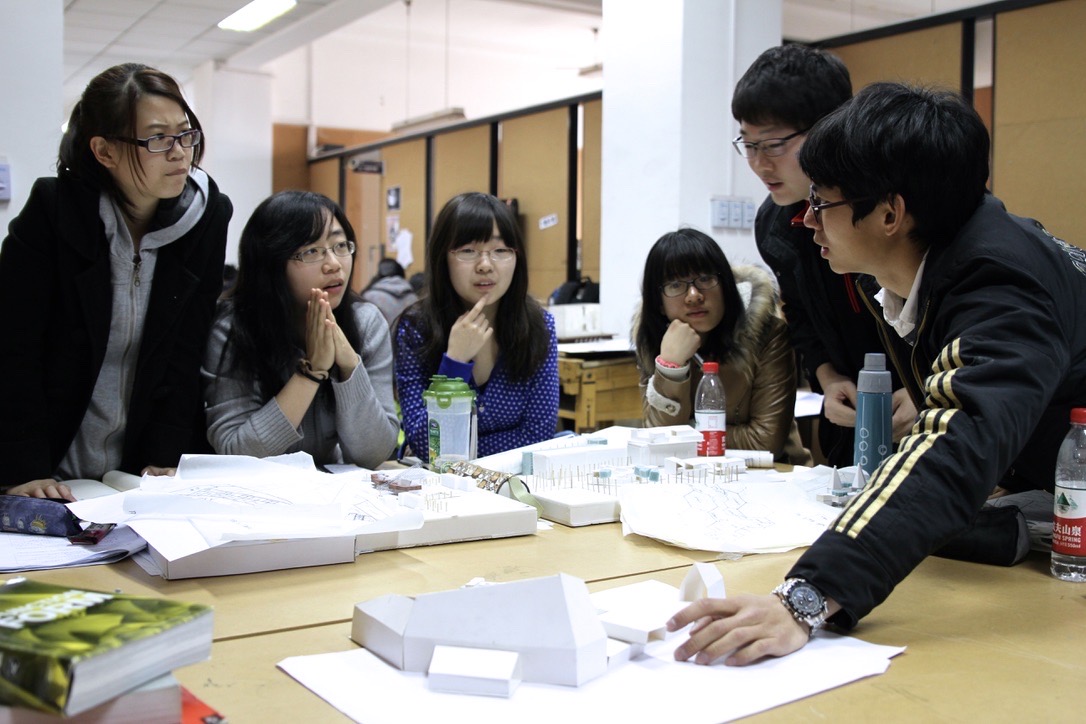
Curry’s 2nd year design studio students in Beijing critique each other’s work, a common exercise in Curry’s classroom
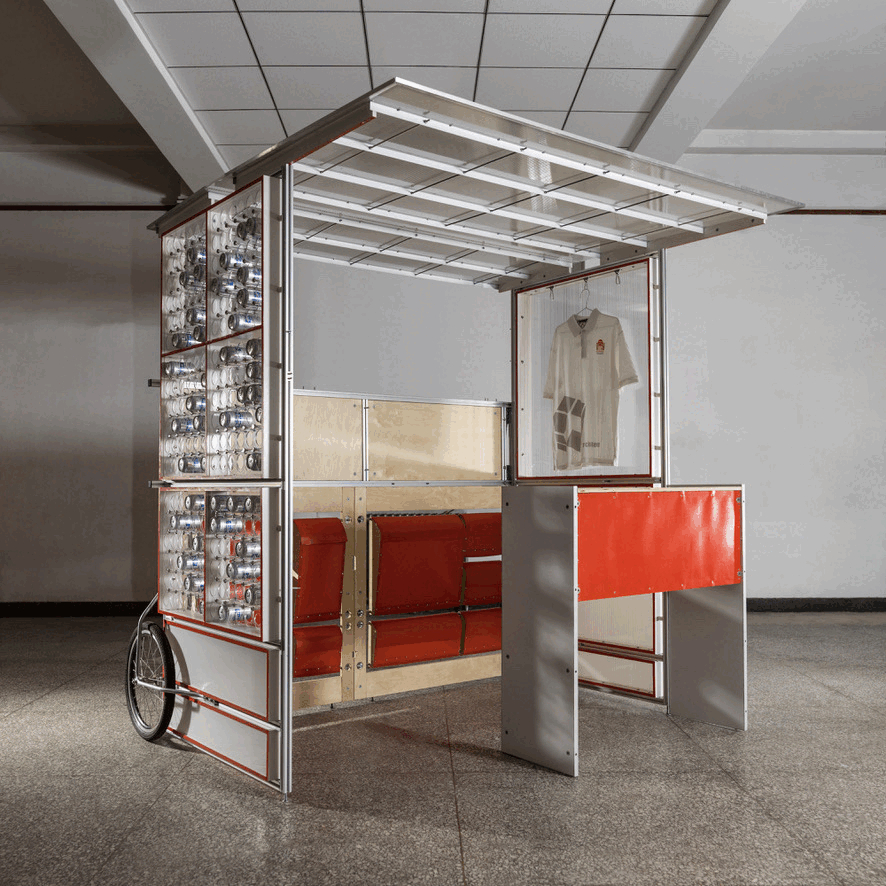
Pop-up shops created by Curry’s students that can be set up in seven minutes
In Beijing, Curry taught four courses: Design Theory, 2nd Year Design Studio, Tectonics Studio, and M.Arch Design Studio 1. His students worked on diverse projects—libraries, conference rooms, pop-up shops, and rest areas. Curry encouraged his students to push the boundaries of creativity. For one of their design studio projects, for example, he challenged students to design a 2.4 m x 2.4 m x 2.4 m conversation space using only three materials that could fit five adults. Projects from his design students are still on display in the architecture building in Beijing.
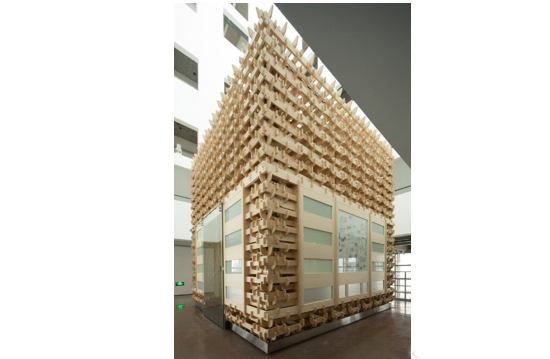 “Cube of Brackets,” a graduation project created by three of Curry’s students, a small meeting room in the atrium of the new architecture building at Tsinghua, is comprised of over 2000 individual pieces and based on the Song dynasty dogong proportion system
“Cube of Brackets,” a graduation project created by three of Curry’s students, a small meeting room in the atrium of the new architecture building at Tsinghua, is comprised of over 2000 individual pieces and based on the Song dynasty dogong proportion system
In 2016, Curry left Beijing to pursue a PhD in Architecture Design at the Delft University of Technology. In 2022, he was invited to return to Tsinghua to head a design studio and teach courses as a professor at SIGS. He now runs the Zao Lab at Tsinghua SIGS.
Zao Lab and bringing into existence
Visitors to campus may notice the large white Chinese character zao on a red background at the entrance to the space near the campus convenience store. This is the entrance to the Zao Lab led by Curry. “The word zao in Chinese is not just about making but also has a more spiritual meaning: to bring something into being,” Curry explained.
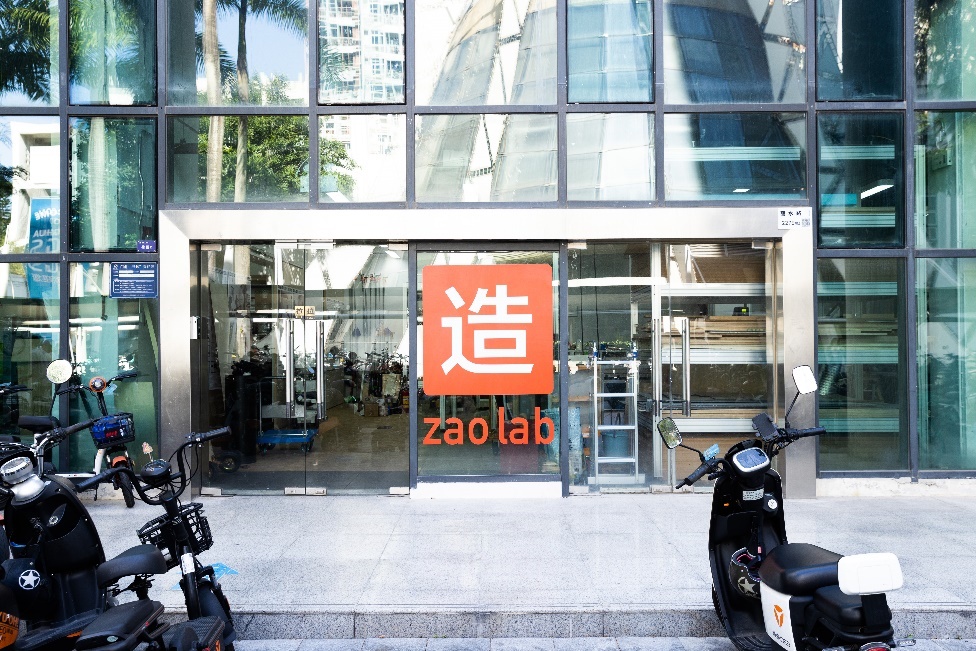
The entrance to Zao Lab on the SIGS campus
This connects with a skill he wants to impart to his students: the ability to bring structures into being by engaging in an intimate dialogue with materials, essentially creating embodied knowledge. When people visit a space, “there is something that induces a certain quality of experience. The job of an architect is to induce that quality of experience,” said Curry.
To do that, students need to have a deep knowledge of the materials. This is where Curry’s hands-on approach comes into play. “Imagine if you went to study Chinese cooking. You learned all the recipes, traditions, all the chopping techniques, but you never touched any meat, any vegetables, you never went to a farm, never smelled anything. After you finish your training, you will not be a very good cook.” According to Curry, a lot of architecture focuses on computers and technology, but without the experience of engaging with materials directly, future architects won’t be able to get a sense of the character of the material and use the materials to their fullest.
Zao Lab focuses on researching the production and manufacturing of housing, and ways to ensure high-quality affordable housing, critical for cities with growing populations and dwindling space.
Zao’s mission captures the sense of social responsibility that Curry has always held dear. His lab’s first product, Zao House, which was displayed at the Bi-City Biennale of Urbanism\Architecture subvenue in Pingshan, explored three different variations of modular design to create highly adaptable, low-cost, and easy-to-construct housing.
The lab’s most recent project Zao House 2.0, offered a radical redefinition of the concept of a smart house, integrating design and technology to construct a housing space that can be reconfigured for various needs and modes while also being economically and environmentally sustainable.
Curry and the other members of the lab look to the past and future for inspiration. They research the use of AR technology to help with assembly while also researching ways to use modern technology and traditional Chinese furniture joints to create more durable joints in housing manufacturing.
With Curry’s guidance and the platform of Zao Lab, SIGS students and researchers can begin to make contributions to the future of sustainable housing.
Writer:Alena Shish
Editors: Yuan Yang, Li Han
Photos by Dai Yujing, Huang Yinsi & Terrence Curry

